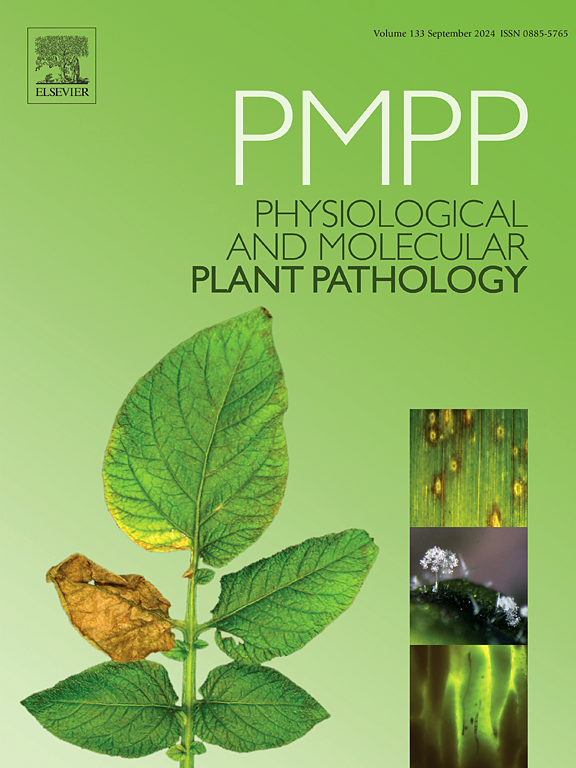Metabolome and transcriptome analysis revealed the effect of soft rot pathogen on the metabolites of Pinellia ternata tuber
IF 2.8
3区 农林科学
Q2 PLANT SCIENCES
引用次数: 0
Abstract
The dried tuber of Pinellia ternata (Thunb.) Breit (P. ternata) is a key component of traditional Chinese medicine, with its quality directly influencing its therapeutic efficacy. However, soft rot poses a major threat to P. ternata production, severely reducing both yield and quality. In this study, metabolomic and transcriptomic analyses were employed to investigate the metabolic and transcriptional changes induced by soft rot in P. ternata. Following infection with soft rot bacterium, 41 down-regulated metabolites and 266 up-regulated metabolites were identified, along with 17448 down-regulated unigenes and 16926 up-regulated unigenes. The content of nucleosides, organic acids, and saccharides in the tubers were significantly affected by soft rot. KEGG analysis revealed that the metabolisms of propanoate and linoleic acid were significantly improved, while the metabolism of starch and sucrose was inhibited. Transcriptome analysis identified 10 key genes involved in these three metabolic pathways, and their expression patterns were validated by qRT-PCR. This study elucidates the impact of soft rot on P. ternata from changes in metabolite content and gene expression, providing a theoretical foundation for the safe medicinal use of P. ternata tubers and offering new insights for developing metabolite-based green strategies to prevent and control soft rot.
代谢组和转录组分析揭示了软腐病病原菌对半夏块茎代谢产物的影响
半夏(半夏属)的干块茎白芷(P. ternata)是中药的重要成分,其质量直接影响其疗效。然而,软腐病对柽柳生产构成重大威胁,严重降低产量和品质。本研究采用代谢组学和转录组学分析方法研究了软腐病对柽柳代谢和转录的影响。感染软腐菌后,共鉴定出41个下调代谢物和266个上调代谢物,17448个下调代谢物和16926个上调代谢物。软腐病显著影响了块茎中核苷、有机酸和糖类的含量。KEGG分析显示,软腐病显著提高了块茎中丙酸和亚油酸的代谢,抑制了淀粉和蔗糖的代谢。转录组分析鉴定出参与这三种代谢途径的10个关键基因,并通过qRT-PCR验证了它们的表达模式。本研究从代谢物含量和基因表达的变化等方面阐明了软腐病对藤属植物的影响,为藤属植物块茎的安全药用提供了理论基础,也为制定基于代谢物的绿色防治策略提供了新的思路。
本文章由计算机程序翻译,如有差异,请以英文原文为准。
求助全文
约1分钟内获得全文
求助全文
来源期刊
CiteScore
4.30
自引率
7.40%
发文量
130
审稿时长
38 days
期刊介绍:
Physiological and Molecular Plant Pathology provides an International forum for original research papers, reviews, and commentaries on all aspects of the molecular biology, biochemistry, physiology, histology and cytology, genetics and evolution of plant-microbe interactions.
Papers on all kinds of infective pathogen, including viruses, prokaryotes, fungi, and nematodes, as well as mutualistic organisms such as Rhizobium and mycorrhyzal fungi, are acceptable as long as they have a bearing on the interaction between pathogen and plant.

 求助内容:
求助内容: 应助结果提醒方式:
应助结果提醒方式:


